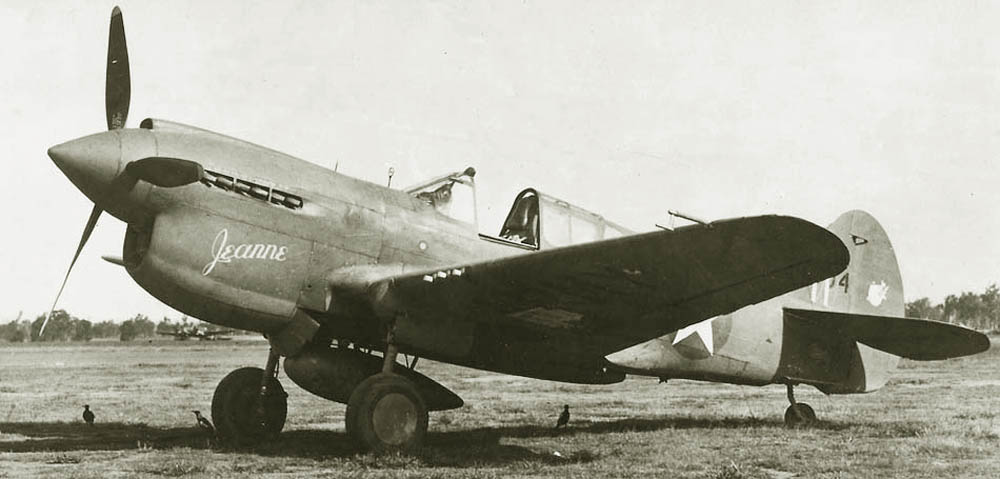
Aviation of World War II


 |
Aviation of World War II |


|
|
Soviet Union | Lend - Lease | Facts | Forum | Germany | Japan | R A F | U S A A F | Other | Photos |
|
|
P-40 D, E "Kittyhawk"Fighter-BomberCurtiss
Engine Allison 12-cylinder liquid-cooled V-twin Allison V-1710-39 (F3R) 1710 cubic inches (28,022 cc), single-speed, single-stage supercharging , manufactured by the Allison Division of General Motors. Starting power 1150 HP / 860 kW at 3000 rpm, operating power at 3300 m 1000 HP / 746 kW at 2600 rpm, combat power 1470 HP / 1100 kW (not more than five minutes). The engine was equipped with a Curtiss Electric three-blade variable pitch propeller with a diameter of 3.36 m. Since it was slightly shorter than its predecessor, this entailed a change in the shape of the hood. In addition, the radiator had to be enlarged and moved forward, as well as the synchronous machine guns dismantled. Armament The P-40D has four 12.7 mm Colt Browning M2 machine guns in the wings (291-312 rounds per barrel). A 227 kg bomb can be suspended under the fuselage. Under the wings, it was possible to carry two 100-pound (45 kg) bombs or six 10-kg bombs (M-42 or T-7) or six 13.6-kg bombs (M-5). In theory, the aircraft's armament could be reinforced with two 20-mm cannons under the wings, but in practice this opportunity was never used. The R-40E has six 12.7 mm Colt Browning M2 machine guns in the wings (295 rounds per barrel). A 227 kg bomb can be suspended under the fuselage. Under the wings, it was possible to carry two 100-pound (45 kg) bombs or six 10-kg bombs (M-42 or T-7) or six 13.6-kg bombs (M-5). The improved fighter, factory designation Hauck 87 and the military P-40D, was flown over on May 22, but produced in limited numbers as customers demanded further enhancement of armament. For the US Air Force, the factories produced only 22 P-40Ds, and the UK ordered 560 more, which eventually received only 20 such machines. The remaining 540 had six 12.7 mm machine guns and were designated P-40E. In the RAF, all these aircraft were called Kittyhawk Mk I. Simultaneously with the construction of the 820 P-40E for American aviation, Curtiss launched the production of P-40E-1 (Kittyhawk Mk IA) fighter-bombers equipped with common bomb racks. weighing up to 227 kg. Of the 1,500 P-40E-1s manufactured, the majority entered service with African squadrons of the British Commonwealth countries, and the rest acted as part of the Soviet Air Force or fought in China and the Aleuts in US units. In the picture above, the P-40E-1 from the 343rd US Fighter Air Group, 1942, Aleutian Islands. |
|
|
Combat Use
Bibliography
|
||||||||||||||||||||||||||||||||||||||||||||||||||||||||||||||||||||||||||||||||||||||||||